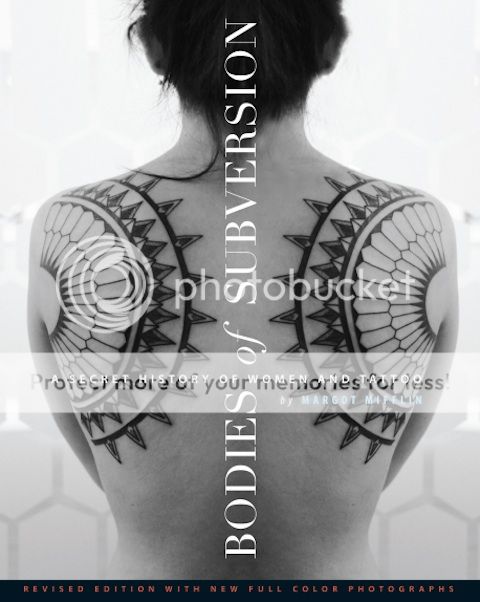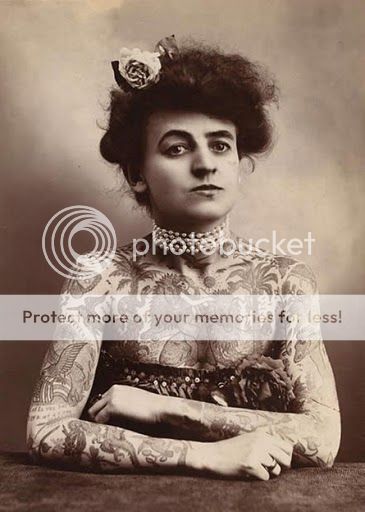"People who were interested in visual art had a blindspot about tattooing - which is a visual art form you see every day. How can you not be interested in that? It has a history just like any visual art that's well worth exploring..." It's estimated that nearly 25% of women in the United States are tattooed, while the percentage of men is close to 20%. With more women having body art than men, it would seem as though the majority of tattoo artists would be women although this isn't the case. This is just one of the many topics concerning women and tattoos that is discussed in the reissue of Margot Mifflin's Bodies of Subversion.

In Bodies, Mifflin looks at the history of women in the generally male dominated industry of tattoos. The first edition of her book was published in 1997 and since then, there have been significant changes to the tattoo industry. For instance, Kat von D is a household name even among those without tattoos and different types of women in the entertainment industry are proudly displaying their body art. Mifflin writes about the history of tattooed women, dating as far back as the late 19th century. She sees parallels between tattoo history and the significant periods of the women's movement in the late 19th century, women's suffrage in the 1920's, and 1970's feminism.

Maud Wagner, the first known female American tattoo artist, 1911 One of the main changes the industry has seen since the first publication of Mifflin's book is the incredible rise and significance of social media. When a picture from her book was posted online, it also brought attention to the ever present issue of female body image. The picture shows a topless woman who has a large tattoo to cover the scars of her double mastectomy. It shows nothing obscene but was still taken down from Facebook. In a June 2013 article of Skin Deep magazine, Mifflin expressed amazement that the picture was considered indecent: "But even more interesting to me is the kind of American puritanism that says nudity is objectionable when breasts are in the photo... even when the 'indecent element [the breasts] have been literally removed."

Although the number of female tattoo artists has been increasing throughout the years, the number of black female artists has not. In Bodies, artist Kimberley Williams suggests that this is due to a lack of role models, with the civil rights movement occurring too recent in history. Mifflin writes that there was a time when the options for tattooing on black skin was limited, but this isn't necessarily true today. The overall message of Bodies of Subversion is where women have been in the tattoo industry, and where they are going. With tattoos becoming more mainstream, it should be only a matter of time before women are equally represented within the business.
TATSoul’s Instagram: @tatsoul
TATSoul’s Twitter: @tatsoul
TATSoul’s Facebook: www.facebook.com/TATSOULsupply.
Thanks,
TATSoul